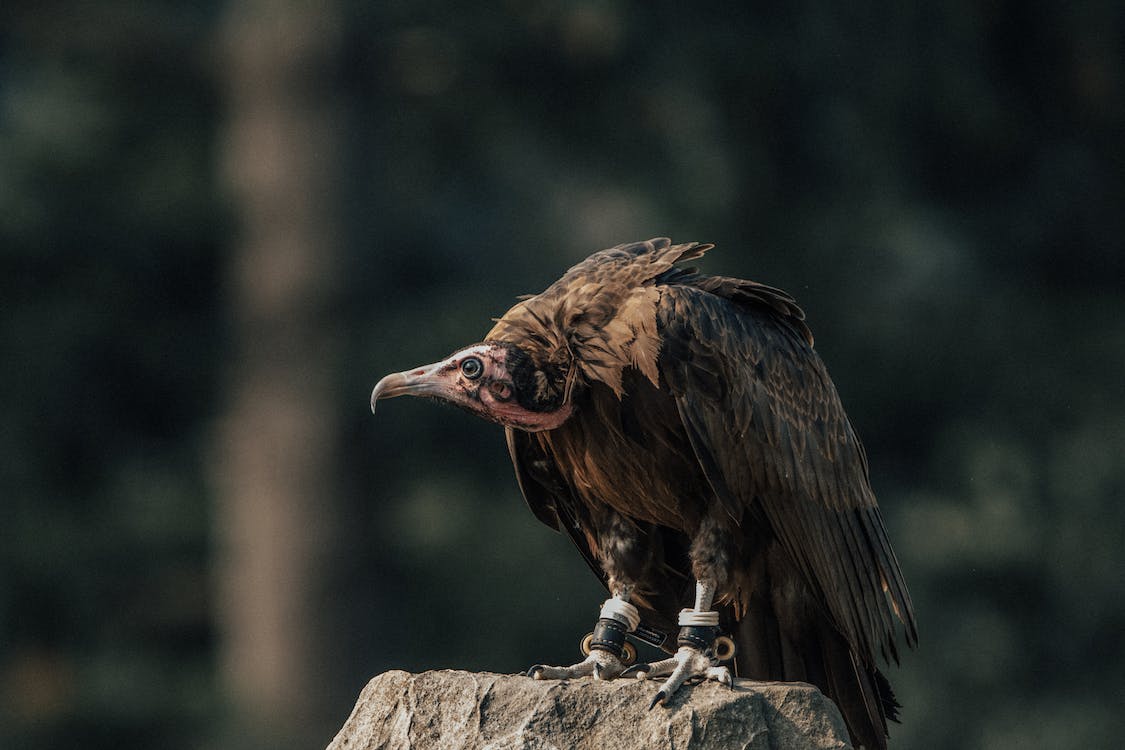The Hooded Vulture, also known as Necrosyrtes monachus, is an Old World vulture that belongs to the order Accipitriformes, together with kites, eagles, hawks, and buzzards. The Hooded Vulture is the sole species in the genus Necrosyrtes, a sister to the larger genus Gyps. Although larger than common birds, this vulture species are among the smallest of the Old World vultures.
This species was initially described in 1823 by Dutch zoologist Coenraad Jacob Temminck. The common name “Hooded Vulture” was derived from the fact that the species has a small patch of feathers that run from its nape to the head’s crown, thus making it seem like it’s wearing a fluffy hood. The meaning behind “Necrosyrtes monachus” are described in three ways: “necro” was used because the species feeds on carrion, “syrtes” means “bog” or “quicksand,” and “monachus” is a Latin term for “monk,” which relates to the species’ hood.
Even though the Hooded Vulture remains a common bird species with a stable population rise in Casamance, some regions in Guinea-Bissau, The Gambia, Senegal, and Dakar show a dramatic 85% decline in population over the last 50 years. Population decline is caused by poisoning, loss of habitat, hunting, and collisions with electricity infrastructures. Because of this, the International Union for Conservation of Nature (IUCN) Red List categorized the Hooded Vulture as Critically Endangered.
Its seven levels of scientific classification are as follows:
Kingdom: Animalia
Phylum: Chordata
Class: Aves
Order: Accipitriformes
Family: Accipitridae
Genus: Necrosyrtes
Species: N. monachus
The physical characteristics of a Hooded Vulture
Hooded Vultures are sexually dimorphic, with females being slightly larger than males. An adult Hooded Vulture’s distinct characteristic is its downy white feathers from its rear neck to the crown of the head. Its featherless face is commonly greyish, although it may turn red, pink, and bluish when excited. The bare neck’s color also changes depending on its aggressiveness and excitation state. Its reactions are typically involuntary, which appears to be a kind of alarm to other vultures. Its plumage is entirely brown with hints of black on feather tips, while its bill is long and narrow, making it conspicuous.
When in flight, the Hooded Vulture’s wings appear broader and shorter, which is less pointed than Egyptian Vulture. Meanwhile, juveniles resemble the adults, except for the hood, which appears darker in juveniles.
The distribution and habitat of Hooded Vultures
Hooded Vultures are a common sight in sub-Saharan Africa, particularly in Namibia, Mozambique, Kenya, Chad, Niger, Nigeria, South Africa, Somalia, Rwanda, Senegal, South Sudan, Swaziland, Uganda, Tanzania, Zambia, Zimbabwe, and the like. These vultures inhabit a wide range of habitats, particularly in semi-deserts, coastal lowlands, forests, open woodlands, grassland savannahs, and areas near human settlements where food sources are abundant. In Kenya and Tanzania, Hooded Vultures settle near cattle ranches, feeding on scraps and carrions around local farms.
The behavior of a Hooded Vulture
The Hooded Vulture’s bill enables the species to remove flesh from bones but makes it hard to remove the skin from carcasses. It has powerful toes that allow it to run and walk fast, but never catch prey. Because of this, it has to add insects to its diet in order to survive.
The Hooded Vulture looks more intimidating than other vultures, but this bird is not afraid to approach humans. Often called as “garbage collectors,” Hooded Vultures feed on human trash. One entertaining characteristic of Hooded Vultures is that they follow ploughs, taking advantage of larvae and insects that are being disrupted by the movement.
They travel in flock and mate for life. Courtship displays are not grand and spectacular, The male swoops down on the female or dances around her. Their nest is built in a tree, mostly on Baobab tree, and is reused for the next breeding season. The nest is well-assembled with fresh vegetation to keep them nourished throughout the nesting season. A female Hooded Vulture lats only one egg and spends most of its time incubating the egg, while the male feeds her. When hatched, the weak chick will require constant attention and care from parents for seven months. After that, it will fledge and perform its first flights.
The diet of a Hooded Vulture
They are scavengers that feed on carrion, bones, and various insects.
BOTSWANA BIRDS | SOUTH AFRICA BIRDS
NAMIBIA BIRDS | ZAMBIA BIRDS | ZIMBABWE BIRDS

